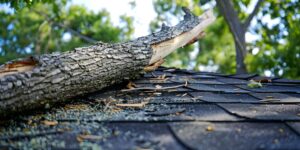Secondary peril events such as wildfires, tornadoes and severe thunderstorms are becoming more impactful and generating an increasingly larger amount of insured losses, affecting the bottom lines of personal and commercial lines property underwriters.
The growing frequency of severe weather events is “fast becoming the rule rather than the exception,” warns an AM Best Commentary, “Secondary Perils Increasingly Responsible for Largest U.S. Catastrophes.”
Although catastrophes are global, the U.S. continues to suffer many of the worst disasters in terms of total damages and insured losses. In addition, demographic shifts and population growth in coastal or other catastrophe-prone areas have elevated the magnitude of economic and insured losses.
“As we have seen with population growth in wildfire-exposed areas in California and other western states—including the recent fires in Colorado—higher economic and insured losses are occurring despite natural catastrophes of lesser intensity,” said David Blades, associate director, industry research and analytics, AM Best.
Swiss Re’s early estimate of natural catastrophe losses of $105 billion makes 2021 the year with the fourth-highest annual total since 1970, even before Kentucky tornadoes losses had been calculated.
According to AM Best, when full calculations are completed, losses stemming from natural disasters are again expected to exceed the 10-year average in 2021, continuing a trend of 5-6 percent increases annually in catastrophe losses.
“It has become more commonplace that at least one secondary peril event, be it a winter storm, a severe flood event, a wind event or a wildfire, results in losses exceeding $10 billion. Such events in densely populated areas have proven extremely costly and are becoming a more frequent threat to homeowners and property owners, generating escalating losses for (re)insurers of personal and commercial property business,” the authors note.
According to the commentary, over the last 40 years, a clear pattern of more frequent, significant natural catastrophe events has emerged, with the trend seemingly exacerbated in the last decade. The authors warn that insurance companies with exposures to these secondary peril risks such as wildfires, tornadoes and severe thunderstorms will face heightened enterprise risk management concerns.
“The fact remains that secondary perils have not been modeled to the same extent as primary perils, although this modeling is evolving, and insurers are taking actions to address exposures to these risks through underwriting and pricing actions,” said John Andre, managing director, AM Best.
In the near term, insurers could see higher insured losses from inflation that increases the value of exposed property, as well as continued demographic shifts to higher-risk geographies and aging building stock. The impact of these trends also is reflected in reinsurance pricing on primary companies, especially in loss-affected areas, according to the report.
“Many have had to retain more business net or take on a larger share of the upper limits to curtail costs while still providing appropriate levels of reinsurance protection,” the commentary concludes.
Some investors have taken note.
According to experts at last fall’s virtual Rendez-Vous de Septembre conference, investors in insurance-linked securities are leaning toward structured catastrophe bonds rather than broader ILS instruments to steer away from unexpected losses from secondary perils. At the same time, catastrophe bond investors are accepting lower yields than they did two years ago, but investors in reinsurance stocks are demanding higher returns, which is creating a disconnect.
Some secondary perils around the world that may not be as modeled, or that may not have as much of a catalog of modeling as cyclone and earthquake, “have presented some issues to insurance companies’ earnings the last several years. Many of the investors in cat bonds have found it to be a very profitable asset class, and one in which they’re excited about doing more,” Tim Ronda, global geographic leader, who oversees Aon Reinsurance Solutions’ regional capabilities worldwide, commented.
“Obviously, there’s been a frequency of activity from secondary perils and some smaller storms. That’s led to a little bit of a challenge addressing a view of risk in the modeling at the lower end of a cat curve and on an aggregate basis.”
He added that Aon believes “there are some really sophisticated firms putting a lot of effort into understanding that risk right now—and ultimately, we believe that capital will flow into that segment as well.”





















 Generative AI: A Double Agent Serving Good and Evil in the World of Claims
Generative AI: A Double Agent Serving Good and Evil in the World of Claims  A New Claims Playbook: United and Street Smart on Litigation Demands
A New Claims Playbook: United and Street Smart on Litigation Demands  Quantifying Social Inflation: How Swiss Re Developed an Index
Quantifying Social Inflation: How Swiss Re Developed an Index  AM Best Improves Outlook on U.S. Personal Auto Segment to ‘Stable’
AM Best Improves Outlook on U.S. Personal Auto Segment to ‘Stable’ 